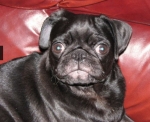Are you awake when this happens? If so they don't count. We call them SWJ Sleep/Wake/Junk. Awake events don't count even though they are flagged. Our awake/semi awake breathing is much more irregular than our asleep breathing and these machines only measure air flow (they can't tell if you are asleep or not) and sometimes awake irregular breathing will earn a flag but it's not real.jtech1 wrote:I seem to get clusters of CA and other events around pressure ramp ups.
Up to you. Typically a person has to use a higher pressure all night instead of part of the night when using fixed pressures to cover the "what ifs" that sometimes happen....like what if I need more pressure on my back or in REM or whatever.jtech1 wrote:1) Should I try a constant pressure one night for the hell of it?
You might like it though. For myself I sometimes need 6 to 8 cm more pressure in REM and I sure wouldn't want to use 15 or 16 cm all night just to cover the REM events. Using auto mode with min of 7 or 8 for the parts of the night not in REM is a LOT more comfortable.
Now you may or may not see wide changes in pressure needs and if you don't then cpap mode might work well for you.
Some people just don't like the air going straight up the nose. Some people don't like the air blowing all over the face that they get with a full face mask.jtech1 wrote:2) Is it possible that some people just do not get enough pressure or flow via nose? I have always had sinus issues... and am wondering if I should try a full face mask for comparison purposes. If face mask may work at lower pressure for me and be more comfortable?
Sometimes people who use full face masks end up having to use more pressure to get the same job done than what they were using with a nasal interface mask. Sometimes 2 to 3 cm more pressure. Not saying that would happen to you but if it did you would have a lot of company in that regard.
Probably wouldn't hurt to have a full face mask available in the arsenal anyway in case you get a bad cold or something.












